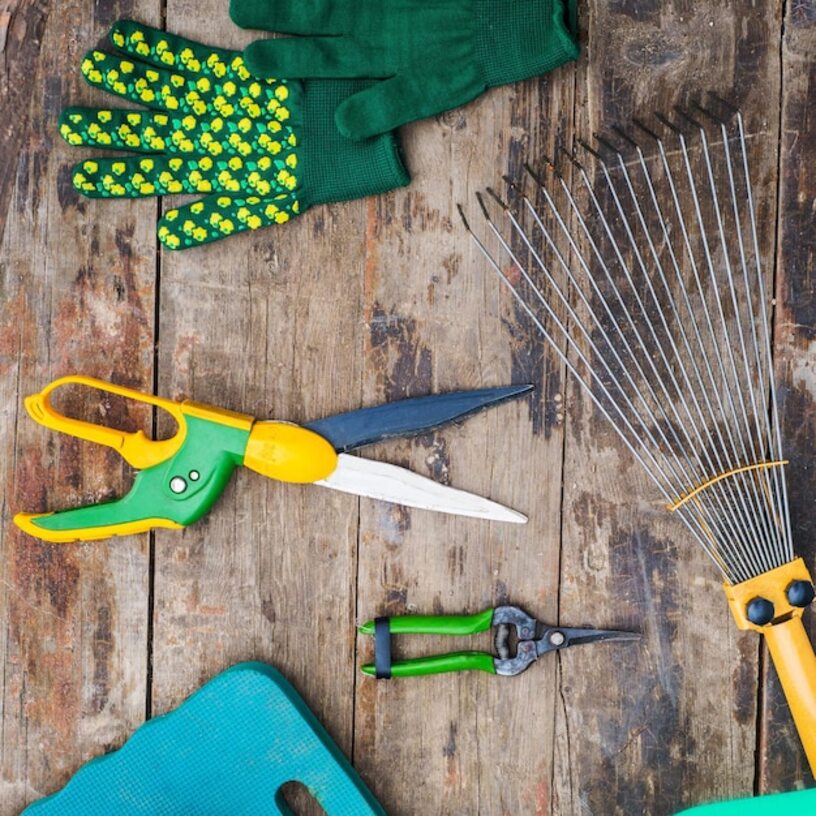Practical guide for preventive maintenance at home

Do you want to keep your home in optimal condition and avoid costly repairs? In this 'Practical Guide to Preventive Home Maintenance', you will discover how to perform basic maintenance that not only ensures the durability of your belongings but also saves you time and money. With simple steps and helpful tips, you will learn to care for every corner of your house, ensuring a healthy and welcoming environment for you and your family. Transform your home into a safe and efficient space today!
1. The importance of preventive maintenance: Why is it essential?
Preventive maintenance is the key to preserving the integrity of your home and its essential elements. Conducting regular inspections and small repairs can prevent major damage that often results in unexpected expenses. For example, detecting leaks in pipes or electrical issues in time not only avoids the deterioration of structures but also mitigates associated safety risks. Additionally, a well-maintained home not only looks better but also promotes a healthy environment by preventing the accumulation of mold and other contaminants.
Implementing a preventive maintenance program allows you to keep track of the different systems and areas of your home. By being proactive instead of reactive, you can properly plan your expenses and time. This includes everything from changing air filters to checking the electrical system or cleaning the drainage channels. With these simple steps, you not only extend the lifespan of your belongings but also contribute to creating a more efficient and comfortable environment for you and your family. In summary, dedicating time to preventive maintenance is a smart investment that brings peace of mind and well-being.
2. Basic tools that every home should have
To carry out effective preventive maintenance at home, having the right tools is essential. There are certain basic tools that should not be missing from the toolbox of any homeowner or tenant. A hammer, screwdrivers of different sizes and types (flat and Phillips), an adjustable wrench, pliers, and a tape measure are just a few essential examples. These tools will allow you to make minor repairs, adjust furniture, and carry out improvement projects without constantly relying on professional services.
In addition to manual tools, it is advisable to have some additional supplies on hand that will facilitate your maintenance tasks. An electric drill can be very useful for more complex tasks, such as hanging shelves or assembling furniture. Don't forget to include basic products in your kit, such as electrical tape, screws, nails, and multi-purpose glue. Having these tools and materials organized in an accessible place will not only make your projects more efficient but also empower you to tackle any unexpected issues that arise at home with confidence and ease.
3. How to create a monthly maintenance calendar
To create an effective monthly maintenance calendar, it is essential to make a list of tasks that require regular attention in your home. Start by identifying the key areas that need maintenance, such as cleaning air filters, checking plumbing, and caring for the garden. Divide these tasks into weekly or monthly categories based on their frequency; some activities may be necessary every month, while others can be scheduled quarterly. By organizing your tasks in a visual calendar, you can ensure that you do not overlook any important activity and maintain a clear record of what has been accomplished.
Once you have your task list, assign specific dates for each activity and use reminders to stay on track. You can choose a simple spreadsheet, a mobile app, or even a traditional paper calendar. The key is to find a system that works for you and your lifestyle. Additionally, consider involving all household members in this process; delegating responsibilities will not only make maintenance more manageable but also encourage teamwork and shared responsibility towards the home. With a well-structured calendar, you will be better prepared to prevent issues before they arise and can enjoy a safe and welcoming environment throughout the year.
4. Review and cleaning of electrical systems: what you need to know
The inspection and cleaning of the electrical systems in your home is an essential task that should not be overlooked. Proper preventive maintenance can prevent serious accidents and ensure that all devices operate efficiently. Start by checking the condition of the outlets, switches, and visible wires. Look for signs of wear, such as burn marks or frayed wires, and if you find any issues, it is crucial to replace them immediately to avoid electrical hazards. Additionally, make sure there is no overload on the electrical outlets; this will not only prolong the lifespan of your appliances but also reduce the risk of fires.
Regular cleaning of the electrical panel and the areas where the electrical components are located is equally important. Dust and dirt can accumulate over time, which could affect their operation. Disconnecting the power before performing any cleaning tasks is essential to ensure your safety. Use a dry cloth to gently clean around the electrical panel and make sure all connections are secure. Consider scheduling an annual inspection with a qualified electrician to review the entire electrical system; this will allow you to detect potential issues before they become costly repairs or hazards to your home.
5. Plumbing maintenance: tips to avoid leaks
The maintenance of plumbing is a crucial aspect to avoid leaks that can cause significant damage to your home. To begin, it is essential to conduct periodic inspections of all visible pipes, looking for signs of moisture or corrosion. Pay special attention to joints and connections, as they are vulnerable points where leaks can occur. Use a flashlight to illuminate dark areas and make sure to check faucets and drains for drips. If you notice any anomalies, do not hesitate to act immediately: tightening connections or replacing worn washers can prevent larger problems.
In addition to visual inspections, it is advisable to carry out regular preventive maintenance. This includes cleaning the drains using a mixture of baking soda and vinegar to dissolve any buildup that may obstruct the flow of water. Also consider installing devices such as screens in the drains to catch hair and debris before they reach the pipes. Finally, do not forget to check the shut-off valves and ensure they are functioning correctly; this will allow you to quickly cut off the water supply in case of an emergency, thus protecting your home from potential damage due to leaks. With these simple tips, you can keep your plumbing in excellent condition and enjoy a home free of undesirable surprises.
6. Appliance care: extend their lifespan
The care of appliances is essential to ensure their optimal functioning and prolong their lifespan. Performing regular preventive maintenance, such as cleaning filters, descaling, or simply checking electrical connections, can make a significant difference in the performance of these devices. For example, the accumulation of dust and dirt in the fans of refrigerators or air conditioners not only affects their energy efficiency but can also lead to more serious failures if not addressed in time. A simple habit like checking and cleaning these components every few months can prevent costly future repairs.
In addition to physical maintenance, it is important to pay attention to the proper use of appliances. Each device has its specifications and recommendations that must be followed to avoid overloads or malfunctions. For example, not overloading the washing machine or using the appropriate cycles according to the type of garments not only ensures effective cleaning but also reduces wear on the motor and other internal components. Investing time in educating yourself about the correct use of each device not only improves its daily performance but also significantly contributes to preserving your investment in the long term.
7. Roof and wall inspection: warning signs
Regular inspection of your home's roof and walls is a crucial part of preventive maintenance. These areas are the first line of defense against the elements, and any signs of damage can lead to much more serious problems if not addressed in time. When checking the roof, look for missing or worn shingles, moisture stains, or mold, which could indicate water leaks. As for the walls, pay attention to cracks or bubbles in the paint; these can be indicative of structural issues or moisture buildup that need to be addressed immediately to avoid costly repairs in the future.
Do not underestimate the importance of a detailed inspection. Early detection is key to preventing greater damage and preserving the integrity of your home. If you notice any worrying signs during your checks, such as persistent leaks or significant deterioration in the structure, consider consulting a professional for a more thorough assessment. Keeping a close eye on the condition of the roof and walls not only ensures safety and comfort within your home, but also contributes to the overall value of the property in the long term.
8. Strategies to keep the garden in good condition throughout the year
To keep the garden in good condition throughout the year, it is essential to implement strategies that adapt to each season. In spring, start with a deep cleaning: remove dead leaves, fallen branches, and any debris that may affect the health of your plants. Take advantage of this time to fertilize the soil and plant new species that will beautify your outdoor space. Don't forget to carry out proper watering, especially when temperatures begin to rise, as keeping the soil moist is key to healthy growth.
During the summer months, the focus should be on constant watering and pruning plants to prevent overgrowth. Use mulch to retain soil moisture and reduce weed growth. In the fall, prepare your garden for the cold months by pruning shrubs and trees, as well as collecting dry leaves that can be composted or disposed of properly. Finally, during the winter, check your gardening tools and make sure to store them correctly; this will not only prolong their lifespan but also make them easier to use when spring arrives again. With these regular practices, your garden will not only look beautiful throughout the year but also contribute to the overall well-being of your home.



